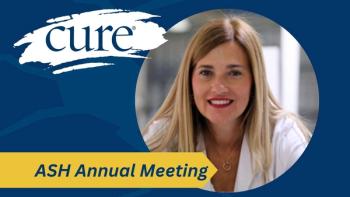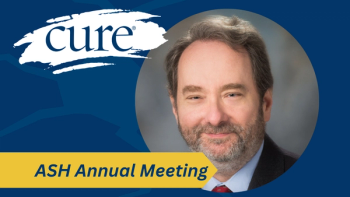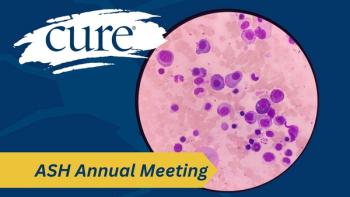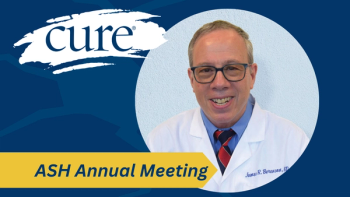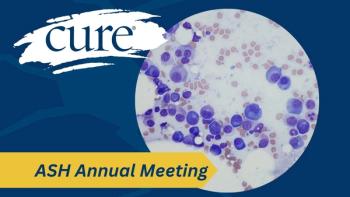
- Hematology Special Issue (March)
- Volume 1
- Issue 1
Make Multiple Myeloma Clinical Trials More Diverse
It is vital to have diverse groups of patients register for clinical trials so that treatment advances can continue to be made.
When it comes to clinical trials, many patients are skeptical that joining one will offer them the best treatment for their cancer. Others worry that even just getting to the trial site is one hurdle too many, or they believe that the process of enrollment and repeated follow-up visits is too cumbersome and will pose yet one more hardship on their already overburdened family caregivers.
Clinical trials can result in major cancer treatment breakthroughs and many patients benefit from participating in them. Today, such research has become even more critical with the many personalized therapeutic approaches that are now available based on an individual’s tumor characteristics, allowing treatments to be tailored to a patient’s specific genetic profile. Nonetheless, cancer clinical trials attract less than 5 percent of all adult patients with the disease, and the recruitment challenge is even greater among African-Americans and other ethnic groups who, the research shows, are underrepresented in these studies.
Against this backdrop, Takeda Oncology convened a special industry/advocacy forum at the recent annual meeting of the American Society of Hematology in San Diego, California, focused on strategies aimed at closing the clinical trial diversity gap, overall — and specifically, in the multiple myeloma setting. The panel, moderated by Fatima Scipione, senior director of patient advocacy for Takeda, featured perspectives from the survivor, health care provider and research community — all sharing the goal of increasing minority participation in clinical trials.
“In some ways, myeloma has been the ‘poster child’ for demonstrating this disparity,” explained panelist Daniel Auclair, Ph.D., senior vice president of research at the Multiple Myeloma Research Foundation. He noted that the rate of this disease is about two to three times higher among African-Americans, yet their genetic abnormalities are less aggressive. “In theory, if [African-Americans] received equal access to treatment, they should do as well, or even better.”
LOCATION, LOCATION, LOCATION
One of the biggest obstacles to clinical trial participation, these stakeholders agreed, involves proximity and access to the trial. While many cancer clinical trials are designed and led by investigators, at large, academic cancer centers, many patients with cancer — and especially those minority groups currently underrepresented — receive their cancer care in the community setting.
It can be very difficult to enlist and identify people for clinical trials if they’re not part of the larger networks and the systems everyone typically uses to share information and recruit patients, explained multiple myeloma survivor and patient ambassador Cheryl Boyce. She called for “bridging those community doctors with people who are at the comprehensive cancer centers to have a dialogue and ensure that, at least once a year, those patients get into a comprehensive cancer center to be seen.”
Leveraging technology represents one way to facilitate the interface between clinical trials being run out of larger cancer centers and patients who find transportation to these centers an obstacle. Web-based technology can help, said panelist Tricia Mangan, R.N., M.S.N., who serves as lead nurse for hematologic malignancies and bone marrow transplant at the University of Pennsylvania’s Abramson Cancer Center. “It is hard to go on a clinical trial. There are many more visits to the office, more blood drawing, more bone marrow biopsies.”
Given that, part of trial participation involves assessing for toxicities and blood abnormalities, Mangan suggested that patients be enabled to go to their local oncologist and click onto a computer to speak with the principal investigator on the study to discuss their treatment and side effects in real time — “that’s an untapped resource.”
Granted, some patients may not be up-to-speed on the technology, she acknowledged, but, “if we can build the infrastructure within our health care systems, that could be really helpful to drive a more diverse population to a trial.”
LESSONS FROM THE TUSKEGEE STUDY
Given the controversy surrounding the early study of untreated syphilis in black men in Alabama, dating back to 1932, people may be surprised to learn that it holds useful lessons for those hoping to enroll a more diverse pool of patients in clinical trials today.
Although leaders of this Public Health Service trial, known as the “Tuskegee Study of Untreated Syphilis in the Negro Male,” did not follow what are now considered standard and essential study protocols, such as informed patient consent and offering the men who had syphilis the antibiotic penicillin when it became the accepted treatment in 1945, organizers were nonetheless successful in their messaging to drive enrollment in the study.
“Most people would be appalled by Tuskegee,” explained Boyce, yet some of their "low-tech” recruitment strategies still make sense. For example, the research team sent out reading material to local stores, churches, schools and barber shops to help recruit patients for the study.
“We can put all of the information out on the Internet, and even though that may help improve awareness and increase education, the computer is not going to build the trust that’s necessary for people to enter and stay in a clinical trial,” she said.
Boyce added that another secret to the study’s success was the personal touch, which, in this case, took the form of nurse Eunice Rivers, who had grown up in that region of Alabama. “Everybody knew her and trusted her,” said Boyce. “Their trust was in her, not the U.S. government … people believed her.”
Those looking to boost clinical trial recruitment in today’s health care environment should keep in mind that the effort is “a marathon and not a sprint,” said Boyce. “It means building those relationships with people who are known in the community and trusted and respected,” and making sure that those trusted messengers not only fully understand the trial information they are sharing with potential recruits, but also believe that what they’re sharing with the community will benefit patients.
“That’s where the legitimization will come.”
A CLEAR AND COMPELLING MESSAGE
The impact and sway of a trusted health care provider in explaining the benefits of clinical trial participation cannot be overestimated, Auclair said. He pointed to a study exploring the reasons why more African American patients don’t participate in clinical trials. That study found that only 14 percent of the patients recalled a trial opportunity being presented favorably to them.
Other reasons cited, among those who declined to participate in a therapeutic clinical trial, included misunderstanding the trial information, fear of side effects and worry over burdening their family members.
Even explaining clinical trials to patients and family members is time-consuming, explained Mangan. As a result, streamlining — and sensitively targeting — explanations in a way that they can understand is key. Clinical trial consent forms can run as long as 15 to 20 pages, and merely telling patients and families to, “take this home and let me know if you’re interested,” doesn’t provide them with much of an incentive to enroll.
“We need to make sure that patients understand the issues: why they are being considered for the trial, how they may benefit, that they may be randomized to the other arm and why we think the trial is in their best interest,” said Mangan. And, if English is not their native language, ideally, a translator would be present for the discussion.
Unfortunately, the old paradigm of patients in trials believing that they are “human subjects” persists, said Auclair, who advocates a way of thinking about these trials that is rooted in the notion of patients being “active participants in the research.” Sharing their side effect experiences is a good example. Given that clinicians often underreport drug side effects, these patient-reported outcomes offer considerable value to researchers.
A more diverse clinical trial pool also means better science and “smarter trials,” Auclair said, because in some cases, varied ethnic or age groups — even women versus men — will respond differently to a particular therapy. “You need meaningful numbers of patients in these groups to pick up on that kind of nuance,” he explained.
Boyce recommended a national awareness campaign involving the many stakeholders, such as the oncology professional societies and cancer advocacy groups. The goal of such an effort would be to “raise the bar” to help patients understand precisely what it means to be part of a clinical trial, and that enrolling means, “much more than just putting someone in one group where they get the medication and another group where they don’t get it.”
This patient-as-research-partner model underscores the benefits when clinical trial enthusiasts come from a larger sphere than just health care providers. As Auclair explained, “I’ve seen very interesting initiatives where patients who have been on clinical trials themselves serve as patient educators and ambassadors,” encouraging fellow patients to learn more about their disease and enroll in trials that are right for them.
Boyce wholeheartedly agreed: “I would love to see inclusion of diverse populations in clinical trials to become truly a priority for this country.” This, she said, will require a Cancer Moonshot type of effort that clearly identifies payment mechanisms and support services to help break down barriers to participation.
“This is hard to do, it will take time,” concluded Mangan, who stressed that community oncology practices, primary care physicians and patient advocates, especially those in underserved areas, are all crucial to the effort to overcome the barriers and recognize the biases. These are themes that should be emphasized early on in medical and nursing school programs.
“It’s about working together to build that trusting relationship.”
Articles in this issue
almost 9 years ago
Debunking the Myths of Stem Cell Donationalmost 9 years ago
A New Chapter Begins With CMLalmost 9 years ago
Zeroing In on CAR T-Cell Therapy
